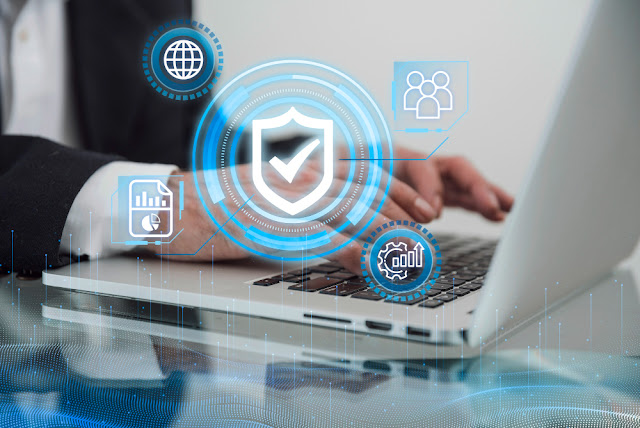In an era dominated by digital advancements, the importance of cybersecurity cannot be overstated. With cyber threats evolving constantly, organizations increasingly recognize the need for robust cybersecurity measures to protect their sensitive information. One critical aspect of ensuring the effectiveness of these measures is undergoing regular cybersecurity audits. A cybersecurity audit evaluates an organization's information systems, policies, and procedures to identify vulnerabilities and weaknesses, helping to enhance overall security posture. Consider seeking assistance from Managed IT Services San Jose professionals to enhance your cybersecurity audit.
This
comprehensive guide aims to demystify the process of acing your cybersecurity
audit, providing insights into preparation, execution, and post-audit
strategies. Following these guidelines, organizations can pass their audits and
strengthen their cybersecurity framework.
Understanding Cybersecurity Audits
Types of Cybersecurity Audits
There
are various types of cybersecurity audits, each focusing on different aspects
of an organization's security infrastructure. Common types include:
· Network
Security Audit: Assessing the security of an organization's network
infrastructure.
· Application
Security Audit: Evaluating the security of software applications and systems.
· Compliance
Audit: Ensuring adherence to industry regulations and standards.
· Physical
Security Audit: Examining the physical security measures in place to protect
information systems.
Importance of Cybersecurity Audits
Cybersecurity
audits serve several crucial purposes, including:
· Identifying
vulnerabilities and weaknesses in the current security infrastructure.
· Ensuring
compliance with industry regulations and standards.
· Demonstrating
commitment to cybersecurity to stakeholders and customers.
· Enhancing
the overall security posture of the organization.
Preparing for Your Cybersecurity Audit
Establishing a Cybersecurity Framework
Organizations
should have a solid cybersecurity framework before diving into the cybersecurity
audit process. This includes:
· Security
Policies and Procedures: Clearly defined and communicated policies for all
employees.
· Access
Controls: Limiting access to sensitive information based on roles and
responsibilities.
· Incident
Response Plan: A well-documented plan for responding to and mitigating security
incidents.
· Regular
Training Programs: Educating employees on cybersecurity best practices.
Identifying Assets and Risks
Conduct
a thorough inventory of all digital and physical assets, identifying potential
risks. This includes data, hardware, software, and personnel. Understanding
these assets and risks forms the foundation for effective cybersecurity
measures.
Regular Security Assessments
Regularly
assess your organization's security posture through internal security
assessments and penetration testing. These proactive measures help identify
vulnerabilities before malicious actors can exploit them.
Executing the Cybersecurity Audit
Selecting the Right Auditors
When
choosing auditors, it is important to consider their expertise and experience
in cybersecurity. Look for auditors with relevant certifications and
qualifications, such as Certified Information Systems Auditor (CISA) or
Certified Information Security Manager (CISM). Additionally, consider their
track record and references from previous clients to ensure they have a proven
track record of delivering high-quality audits. It is also important to assess
their understanding of your industry and specific cybersecurity risks that may
be relevant to your organization. Contacting the IT Consulting San Francisco team ensures that your cybersecurity audit is conducted
effectively and provides valuable insights into your organization's security
posture.
Pre-Audit Meeting and Documentation
The
pre-audit meeting aims to gather information about the organization's IT
infrastructure, security policies, and procedures. It allows the auditor to
understand the scope of the audit, identify potential risks and
vulnerabilities, and determine the appropriate audit approach. During this
meeting, it is important to establish clear communication channels between the
auditor and the organization's management team. Additionally, documentation
plays a key role in a cybersecurity audit as it provides evidence of compliance
with relevant regulations and standards. The auditor will review documentation
such as security policies, incident response plans, and network diagrams to
assess the effectiveness of the organization's cybersecurity controls.
Organizations can ensure a smooth and successful cybersecurity audit process by
conducting a thorough pre-audit meeting and maintaining comprehensive
documentation.
Technical Assessments
Technical
assessments are a crucial component of executing a cybersecurity audit. These
assessments involve evaluating an organization's technical infrastructure and
systems to identify vulnerabilities and potential security risks. This can
include conducting penetration testing, vulnerability scanning, and network
analysis. By thoroughly examining the technical aspects of an organization's
cybersecurity measures, auditors can gain insight into the effectiveness of
current controls and identify areas that may require improvement. Technical assessments
provide a comprehensive understanding of an organization's cybersecurity
posture and help ensure appropriate measures are in place to protect against
potential threats.
Policy and Procedure Review
One
important step in executing a cybersecurity audit is reviewing the policies and
procedures that are in place. This involves examining the organization's
cybersecurity policies and procedures to ensure they align with best practices
and compliance requirements. It is important to assess the adequacy and
effectiveness of these policies and procedures, looking for potential
vulnerabilities or improvement areas. This review will help identify gaps or
weaknesses in the organization's cybersecurity framework and allow for
necessary updates or enhancements.
Compliance Check
A
compliance check is a crucial step in executing a cybersecurity audit. It
involves assessing whether an organization's cybersecurity practices and
policies align with relevant laws, regulations, and industry standards. This
includes evaluating the effectiveness of security controls, reviewing
documentation and records, and conducting interviews with key personnel.
Compliance checks help identify gaps or vulnerabilities in the organization's
cybersecurity posture and ensure they align with legal and regulatory
requirements. Organizations can mitigate risks and strengthen their
cybersecurity framework by conducting a thorough compliance check.
Post-Audit Strategies
Audit Report Analysis
Once
the audit is complete, carefully analyze the audit report. Understand the
identified vulnerabilities and weaknesses and prioritize them based on
severity.
Remediation Planning
Develop
a comprehensive remediation plan to address the identified issues. This may
involve updating policies, implementing additional security controls, or
enhancing employee training programs.
Continuous Improvement
Cybersecurity
is an ever-evolving field. Use the insights gained from the audit to improve
your security posture continuously. Regularly update policies, conduct training
sessions, and invest in the latest security technologies to stay ahead of
emerging threats.
Employee Feedback and Awareness
Encourage
feedback from employees regarding their experiences during the audit process.
This can provide valuable insights into potential security gaps or areas that
require improvement. Additionally, maintain a culture of cybersecurity
awareness to empower employees to be proactive in safeguarding sensitive
information.
Engage in Regular Audits
Cybersecurity
is not a one-time effort; it requires ongoing commitment. Engage in regular
cybersecurity audits to stay vigilant against emerging threats and ensure that
your security measures are effective and up-to-date.
Conclusion
Acing
your cybersecurity audit is not just about meeting compliance requirements;
it's about fortifying your organization against the ever-growing landscape of
cyber threats. By establishing a robust cybersecurity framework, preparing
meticulously, executing audits with diligence, and embracing continuous
improvement, organizations can pass audits and build a resilient defense
against cyber threats. Remember, cybersecurity is a collective responsibility,
and every employee plays a crucial role in maintaining a secure digital
environment.







.jpg)

.jpg)

0 Comments